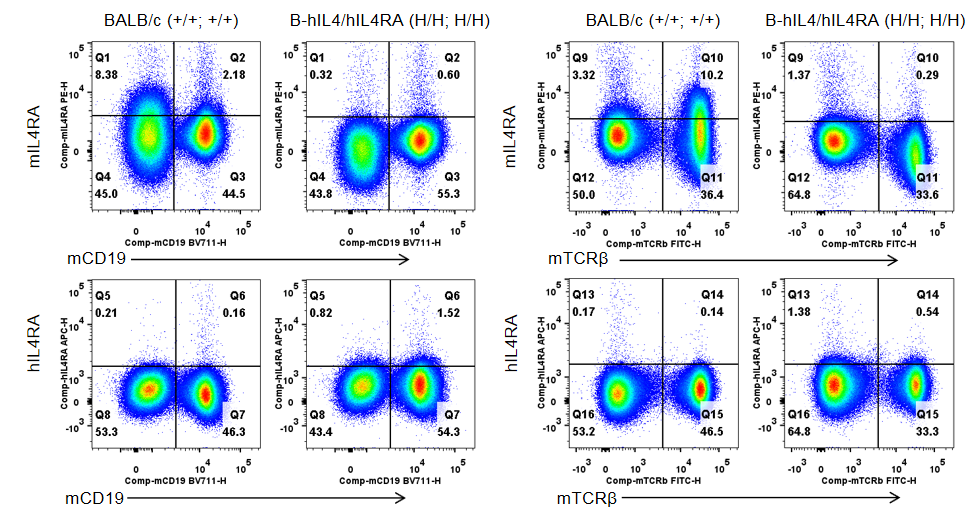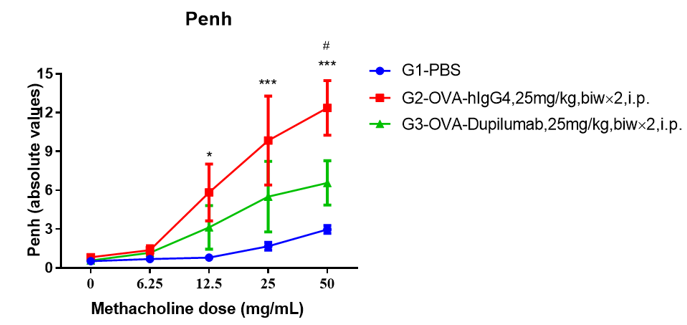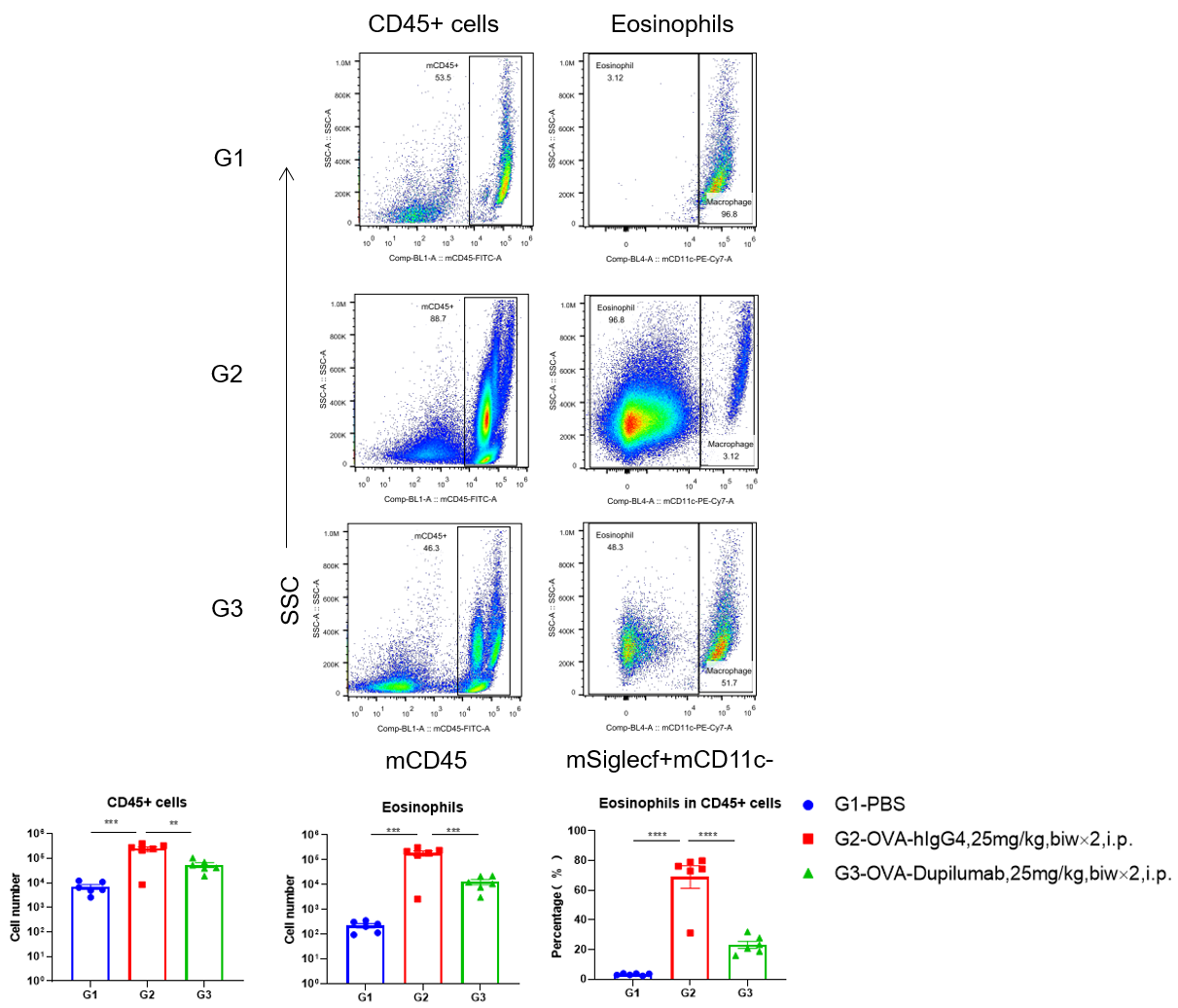


C.B6-Il4tm2(IL4)Bcgen Il4ratm1(IL4RA)Bcgen/Bcgen • 111889
| Product name | B-hIL4/hIL4RA mice(C.B6) |
|---|---|
| Catalog number | 111889 |
| Strain name | C.B6-Il4tm2(IL4)Bcgen Il4ratm1(IL4RA)Bcgen/Bcgen |
| Strain background | C57BL/6JNifdc; BALB/cCrSlcNifdc |
| Aliases | BCGF-1, BCGF1, BSF-1, BSF1, IL-4CD124, IL-4RAA, IL4R |
Gene targeting strategy for B-hIL4/hIL4RA mice(C.B6). The exons 1-4 of mouse Il4 gene that encode the full length protein were replaced by human IL4 exons 1-4 in B-hIL4/hIL4RA mice. The exons 4-7 of mouse Il4ra gene that encode the extracellular domain were replaced by human IL4RA exons 4-7 in B-hIL4/hIL4RA mice. B-hIL4/hIL4RA mice(C.B6) was obtained by backcrossing B-hIL4/hIL4RA mice with wild-type BALB/c mice for 10 generations.




Measurement of enhanced pause (Penh) by whole-body plethysmography. Airway responses following the exposure to increasing doses of methacholine (MCh) were measured for each mouse 24 h after the final allergen or PBS exposure using the whole-body plethysmography. The y-axis represents the Penh absolute value. Increasing doses of methacholine were administered by aerosols. B-hIL4/hIL4RA mice(C.B6) (n = 6) exposed to OVA showed a significant increase in airway hyperreactivity to MCh when compared to B-hIL4/hIL4RA mice(C.B6) exposed to PBS inhalation (n = 6) (*P<0.05, *** P<0.01). Penh values were significantly decreased in B-hIL4/hIL4RA mice(C.B6) treated with dupilumab (in house) when compared to B-hIL4/hIL4RA mice(C.B6) treated with hIgG4 (n = 6) after allergen exposure [MCh doses of 50mg/mL (#P<0.05)].

Analysis of immune cells in BALF by FACS. BALF immune cells were isolated from B-hIL4/hIL4RA mice(C.B6) (n=6). The number and proportion of eosinophils were analyzed by flow cytometry under the treatment of PBS/dupilumab (in house). After treatment of dupilumab (in house), the number of CD45+ cells and eosinophils were much lower than the positive control in homozygous B-hIL4/hIL4RA mice(C.B6).

IgE production in serum of mouse asthma model. Serum was collected at the study endpoint. IgE levels responded to OVA-specific antibody and total IgE levels were analyzed. The results showed that the levels of IgE in mice treated with dupilumab (in house) is much lower than that in untreated mice.

H&E staining of asthma-like model in B-hIL4/hIL4RA mice(C.B6).Lung tissues were collected at the study endpoint. H&E staining results showed that the lung tissues from B-hIL4/hIL4RA mice(C.B6) exposed to PBS aerosols did not show any inflammation. OVA exposure resulted in a significant increase in peribronchial and perivascular inflammation in B-hIL4/hIL4RA mice(C.B6). A significant reduction in eosinophils infiltration was observed in mice treated with dupilumab (in house).